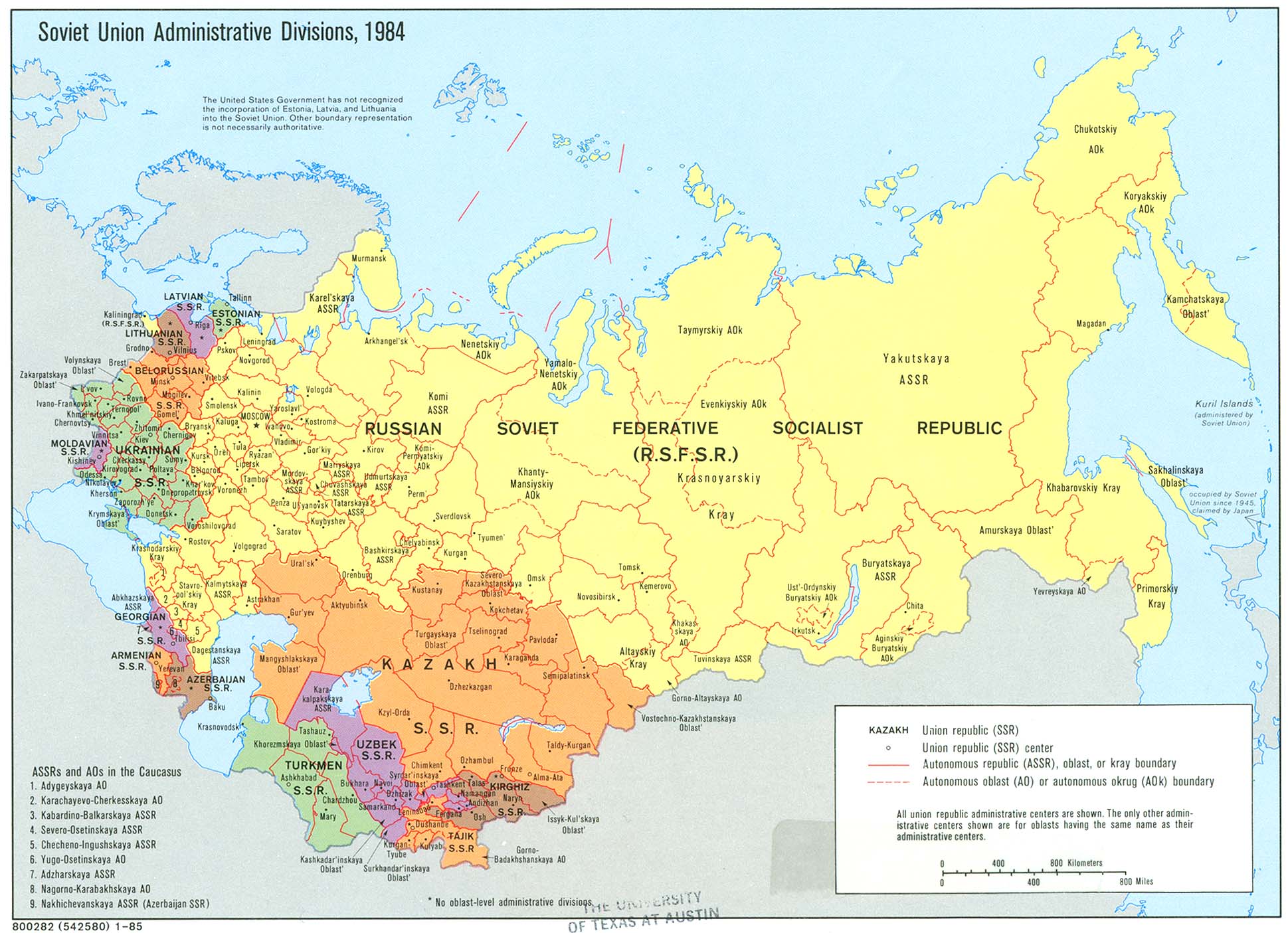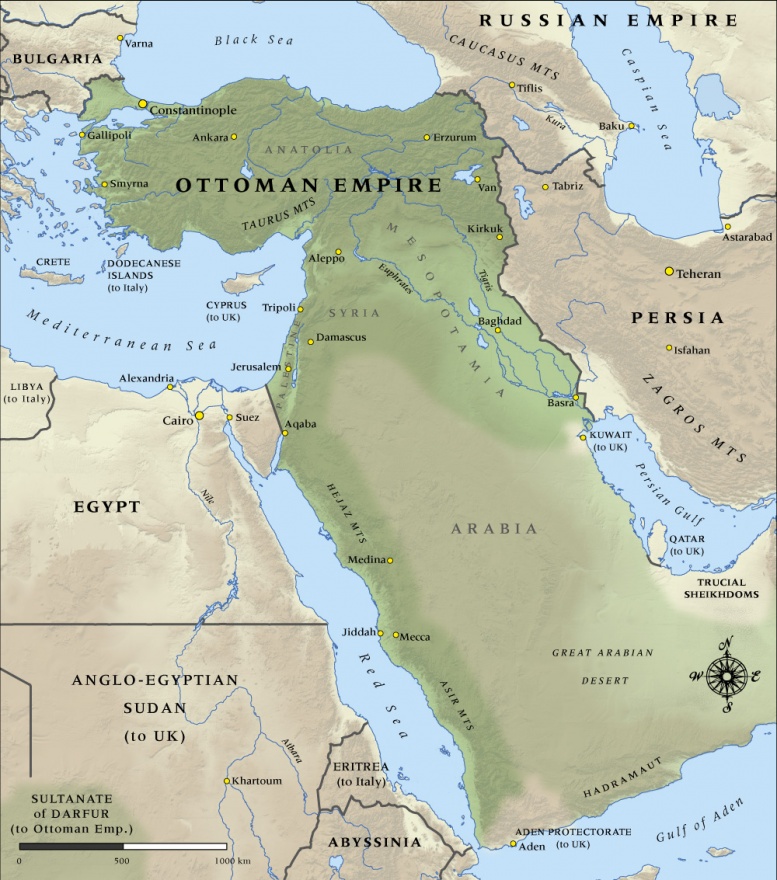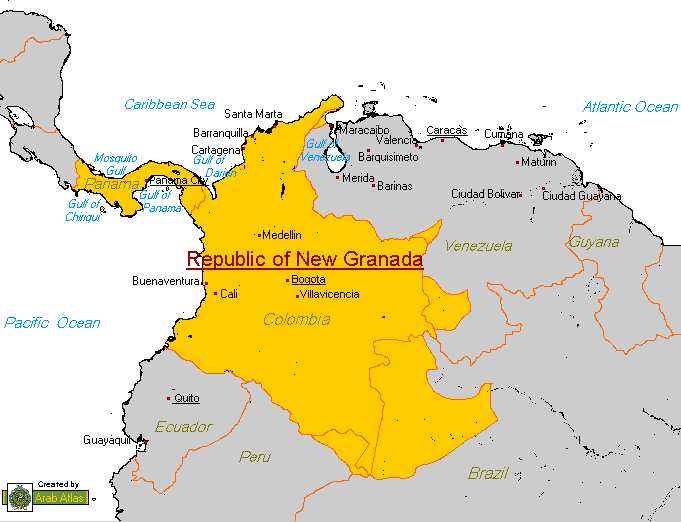Post by lordroel on Jul 31, 2016 16:51:07 GMT
Since many countries merge, split, or just decide to change their name, there are many "missing" countries that no longer exist that might be fun to use be used in a alternate history timelines. This list is far from comprehensive, but it's meant to serve as a guide to some of the most well-known missing countries of today.
Free Territory of Trieste (1947 to 1954)
It was formed after World War II, just north of Italy and Yugoslavia. The Free Territory of Trieste was an independent nation until its two neighbors took it over in 1954.

West Florida (Only several months in 1810)
Also known as the Free Independent Republic of: Parts of Florida, MIssissippi, and Louisana were independent for ninety days in 1810.

North Yemen and South Yemen (1967 to 1990)
Yemen split in 1967 into two countries, North Yemen (a.k.a. Yemen Arab Republic) and South Yemen (a.k.a. People's Democratic Republic of Yemen). However, in 1990 the two rejoined to form a unified Yemen.

Soviet Union (1922 to 1991)
Also known as the Union of Soviet Socialist Republics (USSR), broke into fifteen new countries in 1991: Armenia, Azerbaijan, Belarus, Estonia, Georgia, Kazakhstan, Kyrgyzstan, Latvia, Lithuania, Moldovia, Russia, Tajikistan, Turkmenistan, Ukraine, and Uzbekistan.

South Vietnam (1954 to 1976)
Created from the forceful expulsion of the French from Indo-China in 1954, someone decided it would be a good idea to split Vietnam in two, roughly at the 17th parallel, leaving a Communist north and a pseudo-democratic south. As with Korea before, it didn’t work any better in Vietnam, resulting in intermittent warfare between the two halves that ultimately dragged the United States into a conflict (again with the Korea comparisons,) that was to result in one of the most draining and costly wars in American history. Finally hounded out of the country by dissent at home, America left South Vietnam to fend for itself in 1973, which it did for only two more years, before the Soviet-backed North finally rolled over the country, bringing an end to South Vietnam and renaming Saigon—its capitol—Ho Chi Minh City.

Ottoman Empire (1299 to 1923)
One of the great empires in history, the Ottoman Empire finally came to an end in November of 1922, after a pretty respectable run of over six hundred years. Once extending from Morocco to the Persian Gulf, and from Sudan to as far north as Hungary, its demise was a slow process of dissolution over many centuries until, by the dawn of the 20th century, it was but a shadow of its former self.
But even then, it was still the main power broker in the Middle East and North Africa, and might still be that way today had it not chosen to ally itself with the losing side in World War I. It saw itself dismantled in the aftermath, with the biggest chunk of it (Egypt, Sudan, and Palestine) going to England. By 1922 it had outlived its usefulness, and finally died when the Turks won their war of independence in 1922 and abolished the Sultanate, creating the modern-day nation of Turkey in the process.

Gran Colombia (1819 to 1830)
A South American country that included what is now Colombia, Panama, Venezuela, and Ecuador from 1819 to 1830.

Basutoland (1884 to 1966)
Basutoland is a kingdom in southern Africa. In the first part of the 19th century, a number of the Sotho tribes – the Sotho are a Bantu people – unite to form the kingdom of Basutoland. In the middle of the 19th century Basutoland is confronted with the Boer trekking into the hinterland of Cape of Good Hope and establishing the Orange Free State. Basutoland asks, and is granted, British protection, thus becoming the protectorate of Basutoland in 1868. British mediation leads to a treaty with Orange Free State in which Basutoland cedes part of its territory and the borders as we know them until today are established. Basutoland is administered from the Cape Colony from 1871 until 1884, then again as a seperate protectorate – one of High Commission Territories together with Bechuanaland and Swaziland. During the Boer Wars around the turn of the century, Basutoland remains neutral and in 1910 Basutoland decides to stay apart from the Union of South Africa formed in that year. Basutoland in 1965 gains self government and in 1966 independence as the kingdom of Lesotho.

Austria-Hungary (1867 to 1918)
A monarchy (also known as the Austro-Hungarian Empire) that was established in 1867 and included not just Austria and Hungary, but also parts of the Czech Republic, Poland, Italy, Romania, and the Balkans.

New Granada (1830 to 1858)
This South American country was part of Gran Colombia from 1819 to 1830 and was independent from 1830-1858. In 1858, the country became known as the Grenadine Confederation, then the United States of New Granada in 1861, the United States of Colombia in 1863, and finally, the Republic of Colombia in 1886.

Italian Social Republic (1943 to 1945)
The Italian Social Republic was essentially a Nazi satellite state in Italy and run by Mussolini. Or rather "run" by Mussolini, as it was really only officially recognized by Germany, Japan, and the rest of the Axis powers, and depended heavily on German troops to maintain control. While it claimed Rome as its capital and northern Italy as its territory, it really centered on the small town of Salò, which is near Lake Garda and east of Milan. The rickety regime came to an end in 1945 — on what's now known as Liberation Day — when, thanks to the Allied forces, every last German was removed from the country.

Tibet (1912 to 1951)
Tibet has a history predating 1912 by thousands of years, but 1912 marks the year it officially became a recognized independent country, proclaimed as such by the Dalai Lama. Under a chain of Dalai Lamas, Tibet was a peaceful country. Communist China invaded in 1951, occupying Tibet until it rebelled in 1959, leading China to annex it.

United Arab Republic (1958 to 1971)
Mostly a political union between Egypt and Syria that hoped to thwart Israel, among other things, the UAR didn't last long, as Syria seceded from the republic after only three years. (The fact that Egypt and Syria don't even share a border didn't help with cohesion.) While Egypt continued to be known as the United Arab Republic for another decade, it was dissolved in 1971.

Kingdom of Sikkim (1642 to 1975)
Once a tiny Himalayan monarchy (the kingdom of Sikkim was established in 1642 when Phuntsog Namgyal was crowned the first king), Sikkim was absorbed into India as its 22nd state in 1975. Before becoming part of northern India, Sikkim sat along the Silk Road route to China and was bordered by Nepal, Tibet, Bhutan, and India's West Bengal state.

Ceylon (1505 to 1972)
This South Asian country, better known as Sri Lanka, has a pretty international history, having been a trading hub for Arabs in the 7th century before the Europeans took over. After that Ceylon was ruled by the Portuguese, then the Dutch, and finally the British from 1815 until 1948, when Ceylon gained its full independence.
In 1972, it changed its name to Sri Lanka.

Czechoslovakia (1918 to 1993)
Once a sovereign state in central Europe (surrounded by Austria, Germany, Poland, Ukraine, and Hungary) that declared its independence from the defunct Austro-Hungarian Empire, what was Czechoslovakia peacefully split into two countries — the Czech Republic and Slovakia — in 1993.
After the Austro-Hungarian collapse in 1918,Czechoslovakia was created by combining Austro-Hungarian leftovers — mostly Czech and Slovak lands. It was one of the more prosperous European countries, as well as one of the few with a peaceful, functioning democracy — at least until WWII, when it became occupied by Germany. It was then occupied by the Soviets until that nation disappeared, too. Czechoslovakia thrived once more, but since the Czechs and Slovaks had separate histories, cultures, and values, their split was somewhat inevitable.

East Germany (1949 to 1990)
The wall that separated Berlin and divided East Germany from West Germany was created after WWII, when the Soviets founded the German Democratic Republic in response to the creation of the Federal Republic of Germany by the US, UK, and France in 1949. The 1989 fall of the Berlin Wall meant the end of East Germany, essentially a Soviet satellite state. It was absorbed into the democratic Federal Republic of Germany when Germany reunified in 1990. East Germans had previously lived under strict communist rule.

Yugoslavia (1918 to 1992)
Yugoslavia was a remnant of the Austro-Hungarian Empire, created after WWI by combining bits of other countries, mostly Hungary and Serbia, and by throwing together a smorgasbord of around 20 different ethnic groups, along with their different cultures, traditions, and values. A kind of democratic monarchy, it was annexed by Germany in WWII until Nazi Germany collapsed. Then Josip Tito, leader of the partisan army during WWII, took over, creating a socialist Yugoslavia under his dictatorship in 1946. Yugoslavia remained socialist until 1992, when it split into Croatia, Bosnia, Slovenia, Serbia, Macedonia, and Montenegro.

Free Territory of Trieste (1947 to 1954)
It was formed after World War II, just north of Italy and Yugoslavia. The Free Territory of Trieste was an independent nation until its two neighbors took it over in 1954.

West Florida (Only several months in 1810)
Also known as the Free Independent Republic of: Parts of Florida, MIssissippi, and Louisana were independent for ninety days in 1810.

North Yemen and South Yemen (1967 to 1990)
Yemen split in 1967 into two countries, North Yemen (a.k.a. Yemen Arab Republic) and South Yemen (a.k.a. People's Democratic Republic of Yemen). However, in 1990 the two rejoined to form a unified Yemen.

Soviet Union (1922 to 1991)
Also known as the Union of Soviet Socialist Republics (USSR), broke into fifteen new countries in 1991: Armenia, Azerbaijan, Belarus, Estonia, Georgia, Kazakhstan, Kyrgyzstan, Latvia, Lithuania, Moldovia, Russia, Tajikistan, Turkmenistan, Ukraine, and Uzbekistan.

South Vietnam (1954 to 1976)
Created from the forceful expulsion of the French from Indo-China in 1954, someone decided it would be a good idea to split Vietnam in two, roughly at the 17th parallel, leaving a Communist north and a pseudo-democratic south. As with Korea before, it didn’t work any better in Vietnam, resulting in intermittent warfare between the two halves that ultimately dragged the United States into a conflict (again with the Korea comparisons,) that was to result in one of the most draining and costly wars in American history. Finally hounded out of the country by dissent at home, America left South Vietnam to fend for itself in 1973, which it did for only two more years, before the Soviet-backed North finally rolled over the country, bringing an end to South Vietnam and renaming Saigon—its capitol—Ho Chi Minh City.

Ottoman Empire (1299 to 1923)
One of the great empires in history, the Ottoman Empire finally came to an end in November of 1922, after a pretty respectable run of over six hundred years. Once extending from Morocco to the Persian Gulf, and from Sudan to as far north as Hungary, its demise was a slow process of dissolution over many centuries until, by the dawn of the 20th century, it was but a shadow of its former self.
But even then, it was still the main power broker in the Middle East and North Africa, and might still be that way today had it not chosen to ally itself with the losing side in World War I. It saw itself dismantled in the aftermath, with the biggest chunk of it (Egypt, Sudan, and Palestine) going to England. By 1922 it had outlived its usefulness, and finally died when the Turks won their war of independence in 1922 and abolished the Sultanate, creating the modern-day nation of Turkey in the process.

Gran Colombia (1819 to 1830)
A South American country that included what is now Colombia, Panama, Venezuela, and Ecuador from 1819 to 1830.

Basutoland (1884 to 1966)
Basutoland is a kingdom in southern Africa. In the first part of the 19th century, a number of the Sotho tribes – the Sotho are a Bantu people – unite to form the kingdom of Basutoland. In the middle of the 19th century Basutoland is confronted with the Boer trekking into the hinterland of Cape of Good Hope and establishing the Orange Free State. Basutoland asks, and is granted, British protection, thus becoming the protectorate of Basutoland in 1868. British mediation leads to a treaty with Orange Free State in which Basutoland cedes part of its territory and the borders as we know them until today are established. Basutoland is administered from the Cape Colony from 1871 until 1884, then again as a seperate protectorate – one of High Commission Territories together with Bechuanaland and Swaziland. During the Boer Wars around the turn of the century, Basutoland remains neutral and in 1910 Basutoland decides to stay apart from the Union of South Africa formed in that year. Basutoland in 1965 gains self government and in 1966 independence as the kingdom of Lesotho.

Austria-Hungary (1867 to 1918)
A monarchy (also known as the Austro-Hungarian Empire) that was established in 1867 and included not just Austria and Hungary, but also parts of the Czech Republic, Poland, Italy, Romania, and the Balkans.

New Granada (1830 to 1858)
This South American country was part of Gran Colombia from 1819 to 1830 and was independent from 1830-1858. In 1858, the country became known as the Grenadine Confederation, then the United States of New Granada in 1861, the United States of Colombia in 1863, and finally, the Republic of Colombia in 1886.

Italian Social Republic (1943 to 1945)
The Italian Social Republic was essentially a Nazi satellite state in Italy and run by Mussolini. Or rather "run" by Mussolini, as it was really only officially recognized by Germany, Japan, and the rest of the Axis powers, and depended heavily on German troops to maintain control. While it claimed Rome as its capital and northern Italy as its territory, it really centered on the small town of Salò, which is near Lake Garda and east of Milan. The rickety regime came to an end in 1945 — on what's now known as Liberation Day — when, thanks to the Allied forces, every last German was removed from the country.

Tibet (1912 to 1951)
Tibet has a history predating 1912 by thousands of years, but 1912 marks the year it officially became a recognized independent country, proclaimed as such by the Dalai Lama. Under a chain of Dalai Lamas, Tibet was a peaceful country. Communist China invaded in 1951, occupying Tibet until it rebelled in 1959, leading China to annex it.

United Arab Republic (1958 to 1971)
Mostly a political union between Egypt and Syria that hoped to thwart Israel, among other things, the UAR didn't last long, as Syria seceded from the republic after only three years. (The fact that Egypt and Syria don't even share a border didn't help with cohesion.) While Egypt continued to be known as the United Arab Republic for another decade, it was dissolved in 1971.
Kingdom of Sikkim (1642 to 1975)
Once a tiny Himalayan monarchy (the kingdom of Sikkim was established in 1642 when Phuntsog Namgyal was crowned the first king), Sikkim was absorbed into India as its 22nd state in 1975. Before becoming part of northern India, Sikkim sat along the Silk Road route to China and was bordered by Nepal, Tibet, Bhutan, and India's West Bengal state.

Ceylon (1505 to 1972)
This South Asian country, better known as Sri Lanka, has a pretty international history, having been a trading hub for Arabs in the 7th century before the Europeans took over. After that Ceylon was ruled by the Portuguese, then the Dutch, and finally the British from 1815 until 1948, when Ceylon gained its full independence.
In 1972, it changed its name to Sri Lanka.

Czechoslovakia (1918 to 1993)
Once a sovereign state in central Europe (surrounded by Austria, Germany, Poland, Ukraine, and Hungary) that declared its independence from the defunct Austro-Hungarian Empire, what was Czechoslovakia peacefully split into two countries — the Czech Republic and Slovakia — in 1993.
After the Austro-Hungarian collapse in 1918,Czechoslovakia was created by combining Austro-Hungarian leftovers — mostly Czech and Slovak lands. It was one of the more prosperous European countries, as well as one of the few with a peaceful, functioning democracy — at least until WWII, when it became occupied by Germany. It was then occupied by the Soviets until that nation disappeared, too. Czechoslovakia thrived once more, but since the Czechs and Slovaks had separate histories, cultures, and values, their split was somewhat inevitable.

East Germany (1949 to 1990)
The wall that separated Berlin and divided East Germany from West Germany was created after WWII, when the Soviets founded the German Democratic Republic in response to the creation of the Federal Republic of Germany by the US, UK, and France in 1949. The 1989 fall of the Berlin Wall meant the end of East Germany, essentially a Soviet satellite state. It was absorbed into the democratic Federal Republic of Germany when Germany reunified in 1990. East Germans had previously lived under strict communist rule.

Yugoslavia (1918 to 1992)
Yugoslavia was a remnant of the Austro-Hungarian Empire, created after WWI by combining bits of other countries, mostly Hungary and Serbia, and by throwing together a smorgasbord of around 20 different ethnic groups, along with their different cultures, traditions, and values. A kind of democratic monarchy, it was annexed by Germany in WWII until Nazi Germany collapsed. Then Josip Tito, leader of the partisan army during WWII, took over, creating a socialist Yugoslavia under his dictatorship in 1946. Yugoslavia remained socialist until 1992, when it split into Croatia, Bosnia, Slovenia, Serbia, Macedonia, and Montenegro.








